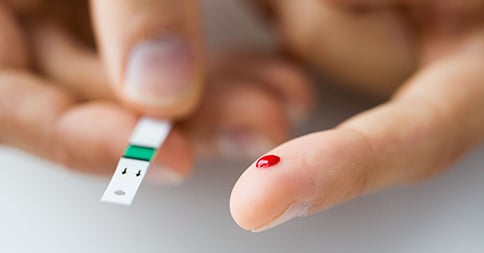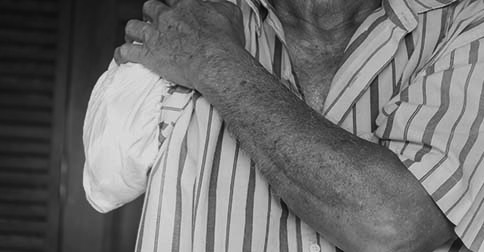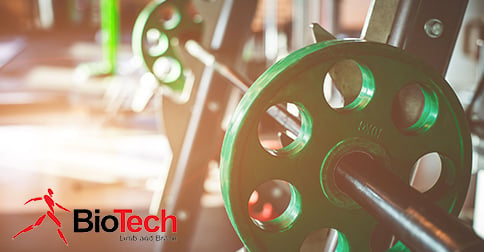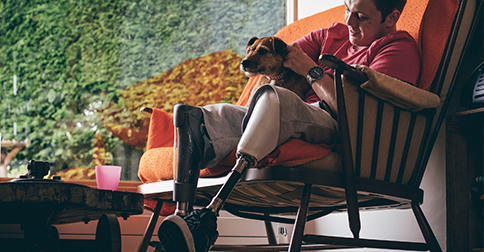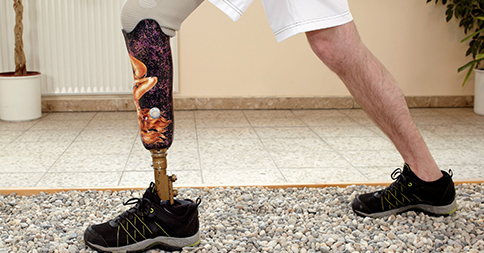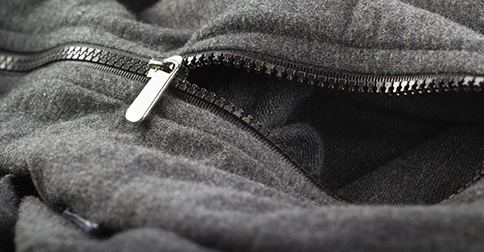The American Diabetes Association observes a number of wellness days throughout the year. This month, they will hold American Diabetes Association Alert Day – a one-day event that highlights methods of reversing the risk for diabetes and encourages people from all walks of life to take the Type 2 Diabetes Risk Test.
With an estimated 86 million Americans living with prediabetes – 90% of which have no idea that they have it – American Diabetes Association Alert Day is more important now than ever before.
Here are a few ways you can get involved!
Educate Loved Ones about Prediabetes
As the name implies, prediabetes is the condition that comes before full-blown type 2 diabetes. Many people are living with this condition – but they may have no idea that they have it, and so they don’t do anything to reverse it. Other people know they have it, but they’re not aware that they can do something to help, or they don’t think it’s worth changing their lifestyle for.
Type 2 diabetes comes with a lot of serious complications. Fatigue, blurry vision, and cuts or sores that won’t heal are just a few of the symptoms of this condition, and although it’s historically a disease that affects those over 40, it’s starting to show up in younger people – even children.
If your friend or loved one is overweight, sedentary, suffers from high blood pressure, has a family history of type 2 diabetes, is from an ethnic group that has a higher risk for type 2 diabetes, has low good cholesterol levels, or has high triglyceride levels, it’s essential that you talk to them about improving or maintaining their health.
Be Proactive
To start a conversation with your friends, family members, or coworkers, download the e-toolkit for American Diabetes Association Alert Day from the American Diabetes Association website. The toolkit includes social media messages and images, customizable posters, steps for success, and much more.
With type 2 diabetes, time is of the essence. Changes must be made now in order to prevent costly, troublesome, and dangerous health complications down the line.
Why Is BioTech So Passionate about American Diabetes Association Alert Day?
Here at BioTech Limb & Brace, we work with a lot of people who have diabetes and need special diabetic shoes. However, selling diabetic shoes to as many people as possible isn’t our focus – our goal is to help people live a long, enjoyable, fulfilling life.
Do we help people with diabetes live comfortably, and do we take great care of them? Of course. But we’re also passionate about the health and wellbeing of our patients – and if there’s a way to help them avoid type 2 diabetes, we’re all about it!
Contact us today for more information on foot orthotics, prosthetic devices, and more.
After limb loss, lots of the things you used to do without thinking about them may suddenly seem challenging. Traveling can be one of those things, and if your friends are making big Spring Break plans, you might be wondering how you can take part without sacrificing your safety or wellbeing. Good news – it’s totally possible to enjoy Spring Break with a prosthesis, and BioTech has all the tips!
Plan Well
Any vacation requires a certain amount of planning, but for those with limb loss, the preparation stage of the trip can be a bit more extensive. Here are a few tips for before you leave:
- Check your prosthesis for cracks, tears, loose parts, and strange sounds (these could indicate a soon-to-be-broken component).
- Pack extra supplies, such as socks, tape, socket liners, tool kit with screwdriver, and plastic bags to put over the prosthesis when you’re near sand or water.
- Take your prosthetist’s phone number and email address, just in case something happens to your prosthesis.
Address Travel Concerns
If you’re flying to your destination, make a special request for bulkhead seating. These are the seats at the front of a section, and they face a wall instead of another row of seats. Sitting here will provide you with more space, and usually, airlines reserve these seats for people with disabilities.
Wheelchair assistance is another thing to look into. Even if you can walk to your flight, a wheelchair will get you to the front of a customs line and can keep you from having to endure a strenuous journey between flights or through a large airport.
Loose clothing and shoes that slip on are essential for getting through airport security efficiently. Also, bring a letter from your doctor or prosthetist that explains your need for a prosthesis. This can be vital if a TSA agent questions anything. Expect your device to set off an alarm at security, and be proactive about giving information to agents.
If you’re not flying, consider Amtrak or Greyhound. Both are well equipped to accommodate the needs of people with disabilities, and Amtrak even offers a discount as long as you have a letter from your doctor on hand.
Gather Hotel Room Information
Before you arrive at your Spring Break destination, be sure you have called the hotel or condo in advance. Ask to speak with a person who has actually been inside the room and is familiar with its layout. Try to avoid “yes” or “no” questions.
If possible, stay on the first floor – or as close to it as you can get. Not only will this make things easier for you, but if the elevators are turned off during an emergency, you’ll be able to get out as easily as possible. And before you check in, ask to see your room to make sure they have accommodated your needs!
Spring Break with a Prosthesis Can Be Great!
There may be a few more steps to having an awesome Spring Break now that you’re an amputee, but believe us when we say that your vacation can still be everything you want it to be! Take the time to prepare, talk to your prosthetist, and make arrangements that will ensure a smooth experience. We hope you have a wonderful time!
An amputation is a huge life change. When you’re looking toward the day when you become an amputee, it can feel like nothing makes sense anymore – how are you supposed to live a normal life without all of your limbs? What will life be like? What can you do to adjust?
We’ve got five things everyone should know before they go in for their amputation. Read on!
#1: People Stare Because They Are Curious
You’re probably going to feel like everyone is looking at you after your amputation. The truth is that a lot of people will be looking at you – but not because they are judging you or making fun of you! They’re just curious, wondering what your story is, and for a moment they have forgotten that staring tends to make people uncomfortable.
If you want to, it’s sometimes fun to come up with a short (probably false) explanation for your limb loss. Simply barking the words “shark attack” at a person whose stare lingers too long can really relieve the tension! (Unless it really was a shark attack, in which case, it’s your call if you want to be honest or not!)
#2: Beware the Internet
As if there weren’t enough reasons to approach the Internet cautiously, now that you’re going to be an amputee, you’ve got people who range from antagonistic to way too interested about your amputation, trolling you on social media. The block button is your friend; use it liberally.
#3: Get an Amazing Prosthetist
The person who helps you adjust to a prosthetic device can be your greatest asset or a huge obstacle. And believe us, the last thing you need after amputation is another challenge in your life! Make sure your prosthetist listens well, thinks outside the box, and is as invested in your emotional wellbeing as he or she is in your physical recovery.
#4: It Is Possible to Overdose on Inspiration
We love inspiring stories and the amazing people behind them – but sometimes, it can start to feel like everyone but you is a Paralympic athlete / can drive a car with their toes / is a reality TV star, etc. If the inspiring stories get to be a little too much, just stop looking for a while. Focus on your story, not theirs. After all, your story is every bit as incredible as anyone else’s – it just might not look the same!
#5: You Can Be Active Without Being an Athlete
Speaking of inspiring stories, most of them are about athletes (though we did find some pretty incredible politicians, too). So if you’re not an athlete, how can you still be active? Good news – there are plenty of ways! Dancing, walking, doing basic exercises while you watch TV, or just flailing around and being silly – these are all great ways to get your blood pumping. You don’t need to be jumping hurdles with a leg prosthesis in order to be an in-shape amputee!
BioTech Is Here – Before and After Amputation
Feeling uncertain about life after amputation? We get it, and we’re here to talk you through every step of your journey. Contact us today for more information on our services and how we can help you recognize all your possibilities as a person with limb loss!
After limb loss, the journey back to your confidence can seem like a twisting, rocky path. But it’s a journey worth taking, and BioTech has 3 tips to help you regain confidence after limb loss!
Tip #1: Think Positive
Okay, we know – this one sounds too simple and cliché. But here’s the thing – scientists have actually discovered that positive and negative thoughts have totally different pathways through your brain. Without getting into the nitty gritty details, positive thoughts must be filtered before they are processed, whereas negative thoughts have a green light without filters. That means you’re not the only one whose thoughts go negative first – and it takes actual effort to think in a positive way.
Tip #2: Challenge Yourself and Make Goals
Sitting around all day thinking about how un-confident you feel isn’t going to change a thing! Instead, try setting some attainable goals for yourself and stretching your abilities a little bit each day. Achieving things, and feeling like you have made progress, will go a long way in increasing your self-confidence and your positive outlook on the future!
Tip #3: Think about the Root of Your Confidence Issues
Even after you start to feel more confident, you’ll probably have days where you fall into a “funk.” That’s normal for anyone, not just people with limb loss! But if it lasts longer than you think it should, try to pinpoint the cause of it. What are you believing about yourself? What are you thinking about others’ opinions of you? Is there an action step you need to take – something as simple as getting out of the house, or something as radical as switching careers? Consider the source of why you’re feeling down, and then think about how you might make a positive change.
Need Someone in Your Corner? Call BioTech!
Whether you’re looking for an expedited fitting for your prosthetic device, or you just need someone to answer a few questions, BioTech is always ready to treat you like family. Contact us today for more information on how we can help you recognize all the possibilities in your life!
If you’re interested in CrossFit, you may be feeling a strange mixture of intrigue and intimidation. Will the other CrossFitters accept you? Will the trainers be able to help you? How are you even going to do this?!
While everyone’s experiences are different, it is possible to start CrossFit after limb loss – and to find the courage to get active again!
Determine Your Goals
Before you actually go to a CrossFit gym, give them a call and explain your situation. The coaches will ask you about what you think you can do, what you are struggling with, and what you are looking to get out of your CrossFit experience.
Here are some ideas for goals to get you started:
- Be able to stand for a certain amount of time without pain
- Improve balance and control
- Walk without limping
Obviously, these goals are great for those who are using a leg prosthesis, but your goals may be different. Come up with a few goals that make sense for you, and communicate them to the coaches.
Go with a Positive Outlook
CrossFit bills itself as inclusive, not exclusive. There are multiple ways to adapt every movement so that people with and without limb loss, young people and older people, can all work out together doing the same exercises in a variety of forms and intensities.
Don’t do something you feel legitimately uncomfortable with, but do try to step outside of your comfort zone as much as possible. Doing something that requires you to be brave will help you develop confidence in your abilities, regardless of how many limbs you have!
Always ask questions if you don’t feel comfortable with one of the movements or if you feel like you need a different adaptation. The coaches are there to help you, and they want you to succeed!
Make sure you celebrate the small wins and the bigger accomplishments. If you stick with it and trust your coaches, CrossFit can be a great way to get back into physical activity and feel better!
BioTech Can Help You Meet Your Fitness Goals
We’re experts on all things prosthetic, which means when it comes to helping you regain your confidence as an athlete, we are ready to do whatever it takes to get you there! Whether it’s exploring CrossFit options, checking out a different type of gym, or working out at home, BioTech can give you the advice you’re looking for. Contact us today for more information!
There are few amputees who don’t struggle with body image issues after limb loss. Although many people assume women’s body image struggles are worse than men’s, this isn’t really the case; men have the same problems women have.
Even if your amputation is planned and you feel like you have mentally prepared for what’s coming, you’ll probably still get hit with body image issues. So what’s the best thing to do if this happens? How can you learn to love your body again?
Embrace Your Individuality
The first thing to know is that everyone’s path to acceptance looks different. We wish we could outline a step-by-step program that would have you loving your body in 3 weeks or less! But that’s just not reality.
Whether you’re in denial about what’s happened, or you’re just beginning to glance into the mirror for the first time, accepting your new body is going to take some time – and it won’t happen the same way for any two people.
Process Your Feelings
Others may applaud you for your bravery, especially once you begin returning to work or school. You might be tempted to “fake it” for a while – acting like you are fine with your new body, even though you aren’t.
While total transparency may not be an option for you in the workplace, you should seek out a safe space in which to express how you really feel, deep down. Maybe you feel a lot of self-loathing because of your amputation, even though you’re not to blame for it. Maybe you can’t look in the mirror without crying. Maybe you are struggling to even get through the day.
This will get easier, but in the meantime, a counselor or trusted friend can help you vent your fears, anger, and frustration in a safe way. Give yourself the resources you need to move through this process – don’t stuff your feelings away.
Give It Time
As you learn to live with limb loss, you will become accustomed to your new body shape. You’ll learn to give yourself grace as you deal with difficult, sometimes irrational, emotions. By putting words to your emotions, you will find that they become easier to handle – which means you’ll move through them at a healthier pace. Soon, you will see strength and resilience in the mirror instead of an incomplete body – and that’s when you know you’re well on your way to loving your body again after limb loss.
Happy Valentine’s Day from BioTech!
No matter where you are in your limb loss journey, BioTech is here to show you some love! Have a wonderful Valentine’s Day, and contact us for all your prosthetic and orthotic needs!
If you’ve recovered from your lower-extremity limb loss to the point that you’re moving pretty well and you have a decent range of motion, you may be ready to try some exercises that will help you build strength. As always, before you start any kind of exercise program, you should talk with your doctor and your prosthetist to determine whether you are ready for something like this. You don’t want to rush it – but if your body is ready, it can be a great way to start feeling more normal!
Read on to learn about some exercises you can do after lower-extremity limb loss.
Seated Push-Up
Put a sturdy chair against a wall so that it won’t tip over. Sit in the chair and place your hands on the armrests. Push down onto the armrests, raise your hips a couple of inches off of the seat, and then bring yourself back down. For more of a challenge, lift one leg during the exercise.
Partial Squats
While holding on to something sturdy, distribute your weight evenly onto both legs, and squat as if you were sitting on a tall stool. Don’t try to do a full squat – just a partial one. Repeat 10 times. Strengthening the thigh muscles will make it easier to sit and rise from a chair.
Pelvic Tilt
Lying on your back, with or without your prosthesis, bend your hips and knees to a 90 degree angle. Place your hands just above your knees, and press down with your stomach muscles to flatten the small of your back. Keep your thighs still. Hold steady for two to three seconds, breathing normally. This move strengthens the abdominal muscles (stomach). For more of a challenge, lift your head.
Even Weight Bearing
Think about how much weight you have on each leg. Many people with limb loss put all of their weight onto the unaffected leg, using the prosthesis as a crutch. Make an effort to stand with your weight evenly on both legs while you perform one daily task, such as talking on the phone or making coffee. By being aware and changing this one habit, you can make improvements in your balance on a daily basis.
Braiding
Using a sturdy piece of furniture for balance assistance, take a few steps to one side, crossing your prosthetic leg in front of, and then behind, your unaffected leg. Stand up as straight as possible and use your hands only for balance, if you can. If your amputation is above the knee, stick with small steps so that you don’t put too much weight on the toe of your prosthesis. This could cause the knee to bend.
BioTech Is Here for You!
Whether you need help with a fitting or advice for after-amputation care, BioTech is here to help. Contact us today for all your prosthetic needs!
Prosthetic devices don’t last forever, and eventually, you’ll need to replace your current prosthesis with a new one. Generally speaking, prosthetic devices are not reused in the United States due to legal issues; but it is possible to disassemble used limb prostheses and ship them to other countries for people in need.
If you’re looking for a way to donate an old prosthesis, the organizations listed below may be able to accept them, depending on their program’s current needs.
Hope to Walk
13016 Eastfield Rd. #200-310
Huntersville, NC 28078-6622
704/243-5006
hopetowalk.org
Hope to Walk designs and develops functional, affordable prosthetic devices. They also have a delivery model that allows the poorest in the world to have an opportunity to walk. They accept donations of lower-limb prostheses and/or parts.
Limbs for Life Foundation
9604 N. May Ave.
Oklahoma City, OK 73120
405/843-5174 or 888/235-5462 (toll-free)
limbsforlife.org/get-involved
The Limbs for Life Foundation collects and distributes used prostheses and prosthetic componentry, totally free of charge, to amputees in Third World countries. They use parts to create prostheses for their recipients, which reduces the costs for the prosthetist. This organization also accepts unused socks or liners.
Prosthetic Hope International
1937 Shalimar Dr.
Atlanta, GA 30345
prosthetichope.org/projects/pocc
Prosthetic Hope International’s purpose is to keep surplus usable P&O goods from being sent to landfills while so many people around the world are in desperate need of prostheses and orthoses. This organization provides a clearinghouse to individuals, P&O facilities, manufacturers, and distributors that allows them to make tax-deductible donations of new and gently used prosthetic items, and new orthotic items.
Standing With Hope
PO Box 159115
Nashville, TN 37215
866/377-7175
standingwithhope.com/prosthetics/donate-a-used-prosthetic-limb
Standing With Hope is a faith-based prosthetic outreach program that ministers to West Africa. They accept donations of socks, liners, used prostheses, and other prosthetic supplies.
Your Donation Could Change Lives!
If it’s time for a new prosthesis, your old one could change someone’s life. The list above is not an exhaustive list of donation options, so if you don’t see an organization near you, it’s worth doing some research to see if there’s one close to where you live that we haven’t listed.
Don’t forget to call BioTech for your next prosthesis fitting – we offer expedited fittings for our out-of-town patients, so your schedule can always be accommodated! Contact us today for more information.
Almost everyone experiences some type of “blues” during the winter months. This can be related to the holidays, the shorter days, or the gloomier weather – but hardly anyone is immune! For a new amputee, though, these already difficult months can feel even harder than usual. What are these emotions, and how can you deal with them?
Look for Symptoms
The first thing to do is look for signs that you are experiencing some form of depression. These symptoms may include:
- Changes in appetite or eating patterns
- Low energy levels
- Changes in sleeping patterns
- Poor concentration
- Decreased interest or enjoyment of activities you used to like
- Loss of interest in sex
- Withdrawal from friends and family
- Feelings of hopelessness, unreasonable guilt, or worthlessness
- Emotions expressed without genuine feeling
If you are experiencing any of these symptoms, it’s possible that you are dealing with depression, which may be compounded by the winter season.
How to Deal with Winter Depression
Physically speaking, there are certain things you can do to make the season easier for you. Get plenty of rest, make a point to get out of bed and get dressed every day (and leave the house if possible), and eat healthy foods that won’t give you a sugar crash. Do whatever kinds of exercises you are able to do without pain – get those endorphins running! Avoid alcohol and any other drugs that you don’t absolutely need for medical reasons. And whatever you do like about yourself – now is the time to really focus on those things!
Emotionally, it’s important that you tell someone how you are feeling, and let them remind you that you’re not alone. This may be a licensed counselor or a trusted friend, but you need a confidant. Spend time doing things that bring you some amount of joy, like watching a movie or getting takeout from your favorite restaurant. You don’t need to try to force yourself to “be happy.” Take a little while to do what you need to do in order to feel better. You can also contact an Amputee Coalition Support Group. If you’re not sure where to find one, contact the Amputee Coalition office toll-free at 1-888-AMP-KNOW for information and help.
Mentally, try to avoid making big decisions during this time. Make a commitment to working with your medical professionals, even when you don’t feel like it, so that they can help get you back to feeling normal. Speak positively instead of negatively about yourself and your body. You may not believe what you’re saying right now, but you can change your thought patterns – and it starts with deciding to change them. If needed, consult a psychotherapist to help you with this.
You’re Not Alone!
Here at BioTech, we’re so much more than just a prosthetics and orthotics company. We love our patients like family, and if you need some friendly advice to help you get through the winter, we are more than happy to help. Contact us today for more information!
After you’ve lost a limb, your old clothes may not work as well anymore. Even if they still fit, it may be far too labor intensive for you to maneuver them over a prosthetic device, fasten a lot of buttons, or to reach as far as you need to in order to get something on! So what can you do? The answer lies in adaptive clothing, which is clothing and footwear designed specifically for people who may have a restricted range of motion or otherwise have difficulty dressing themselves.
What Is Adaptive Clothing?
Designed for post-surgery individuals, people with disabilities, elderly people, children and adults with developmental delays, people with arthritis, and – of course – people with limb loss, adaptive clothing is meant to make the dressing process easier and smoother. It provides easy access to specific body parts without requiring the complete removal of the garment, saving its wearer a lot of time and energy.
Adaptive clothing comes in a variety of styles and with a wide range of medical purposes in mind. Most of them have zippers that make it easy to access a body part without removing the clothing, allowing the person wearing the garment to maintain a certain level of independence. Additionally, it allows for fast access to medical devices (such as a prosthesis) for both the patient and a nurse or caregiver.
What Options Are Available?
Among the many different forms adaptive clothing can take, you will find:
- Velcro or snap closures (as opposed to buttons)
- Front-closing bras
- Wrap-around skirts
- Zippers located conveniently in the front
- Open-back clothing
- Shoes with Velcro
- Side-opening pants
- Designs that allow dressing while seated
Important Qualities for Your Adaptive Clothing
When shopping for adaptive clothing, it’s important to keep a few things in mind. First, you don’t want something that’s going to feel abrasive or irritating. Secondly, make sure that the design allows you to stay modest and dignified! With wrap-around items in particular, you want a generous amount of overlap, and – if you are in a wheelchair – a high-backed garment.
Make sure you check the location of fasteners. You don’t want an excessive amount of pressure to be applied to a sore or tender area, because this can produce sores, which can get infected. Also look for high-quality fabrics that will stand up to a rigorous usage and cleaning schedule so that you don’t end up with a fraying or stretched-out garment!
More Questions? BioTech Is Here!
Whether you’re interested in adaptive clothing or you’ve got questions about post-op care, BioTech is here to help. Contact us today and let us take great care of you!
